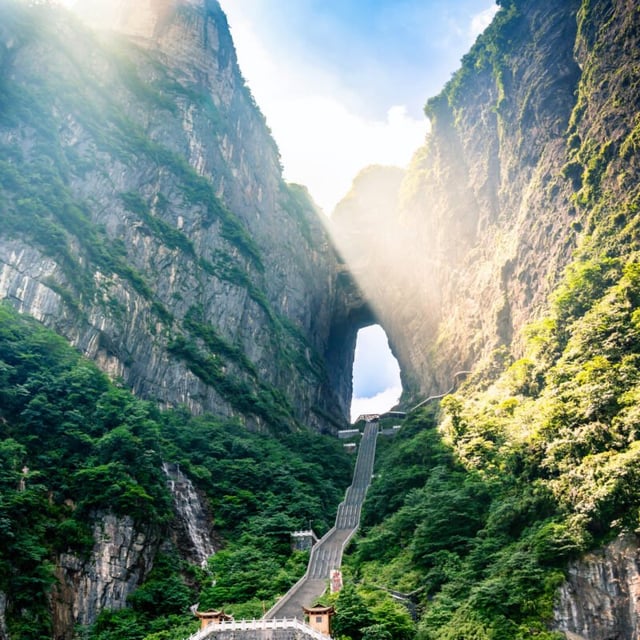
Geological Features of Tianmen Mountain
Tianmen Mountain, towering over the landscape at an elevation of 1350-1500 meters, is a geological marvel characterized by its distinctive karst formations. This article delves into the fascinating geological features of this natural wonder, exploring its topography, geomorphology, and unique karst landforms.
Topography and Geomorphology
Tianmen Mountain stands as a complete synclinal tectonic unit, shaped by millions of years of geological processes. The mountain exhibits a typical mid-mountain karst platform-peak-forest-canyon landform, with distinct variations in topography.
Highland Karst Platform and Cliff Landscape
The summit of Tianmen Mountain is dominated by a vast karst platform, characterized by its flat surface and steep cliffs. This plateau-like landscape is a result of long-term erosion and dissolution of soluble rocks, primarily limestone. The cliffs, often reaching hundreds of meters in height, create a breathtaking visual spectacle. The most famous of these is the "Heaven's Gate" itself, a massive natural arch carved into the cliff face.
Lowland Karst Peak-Cluster and Canyon Landscape
As one descends from the summit, the landscape transitions into a mesmerizing panorama of karst peak-clusters and canyons. This intricate topography is formed by the differential erosion of limestone formations. Towering peaks, resembling pillars reaching for the sky, rise from the ground, interspersed by deep, narrow canyons carved by ancient watercourses.
Karst Landforms
Tianmen Mountain is a paradise for speleologists and geologists, showcasing an impressive array of karst landforms. These formations, sculpted by the dissolution of soluble rocks, add to the mountain's unique charm.
| Landform | Description |
|---|---|
| Solution Dolines (Sinkholes) | These are depressions or closed basins formed by the dissolution of underlying limestone. Tianmen Mountain is dotted with numerous dolines, varying in size and shape. |
| Stone Buds (Lapies) | These are small, pointed rock formations that resemble buds, formed by the uneven dissolution of limestone surfaces. |
| Karst Depressions | These are larger, bowl-shaped depressions formed by the coalescence of multiple sinkholes. They often collect water, creating temporary or permanent ponds. |
| Solution Caves | Tianmen Mountain is riddled with caves, formed by the dissolution of limestone along fractures and bedding planes. These caves often contain stunning formations like stalactites, stalagmites, and flowstones. |
FAQs
What type of rock primarily makes up Tianmen Mountain?
Tianmen Mountain is primarily composed of limestone, a sedimentary rock highly susceptible to dissolution, which has led to the formation of its spectacular karst features.
How was the "Heaven's Gate" arch formed?
The "Heaven's Gate" arch is believed to have formed through a combination of tectonic uplift and erosion. As the mountain uplifted, stresses within the rock created fractures. Over time, water seeping through these fractures dissolved the limestone, gradually widening the gap until the arch was formed.
Why is Tianmen Mountain considered a significant geological site?
Tianmen Mountain is a significant geological site due to its classic example of a mid-mountain karst landform. The diversity and scale of its karst features, from the summit plateau to the peak-cluster and canyon landscape, provide valuable insights into geological processes and the evolution of karst environments.
note: This return of all, without the author's permission, may not be reproduced